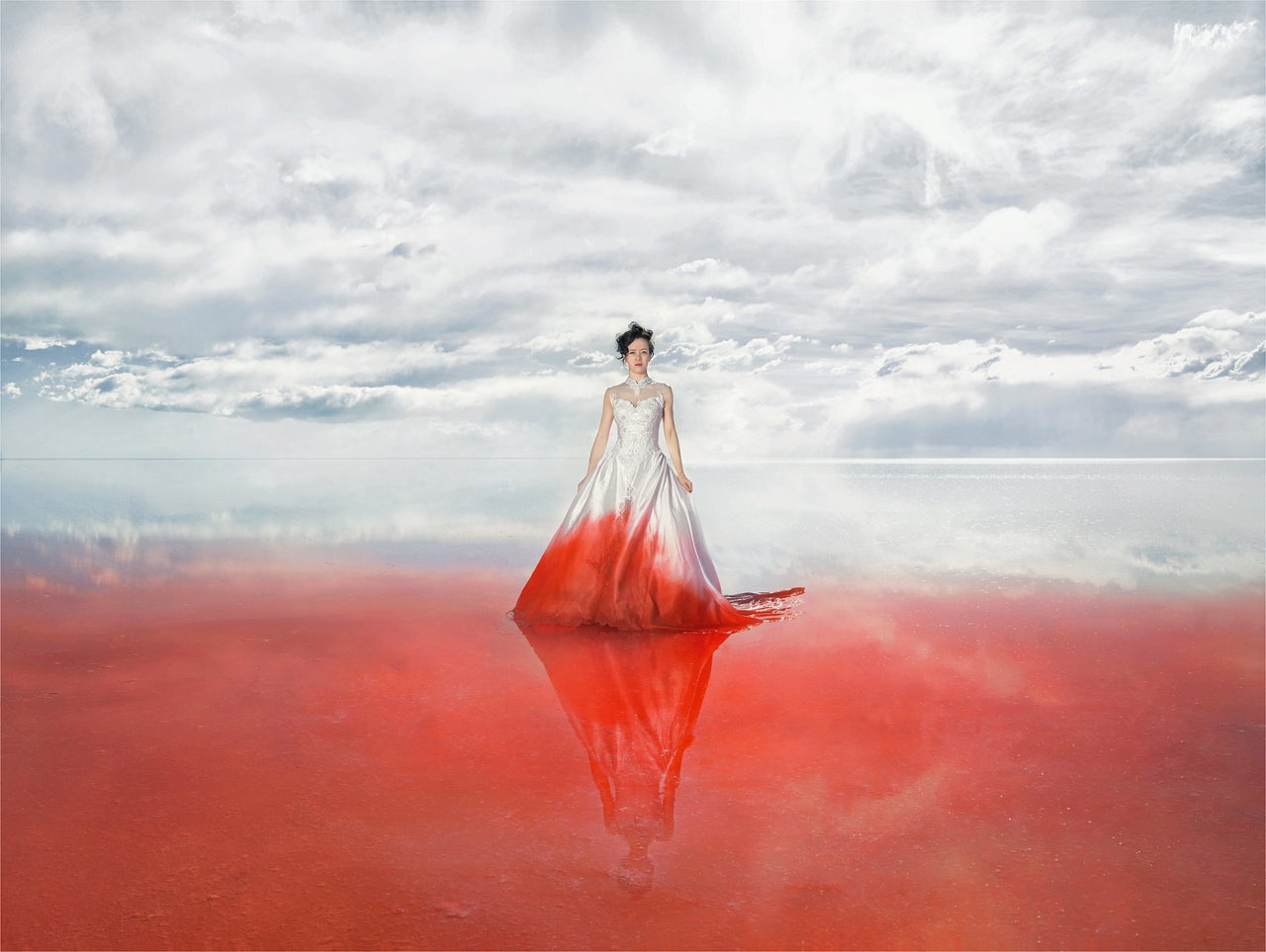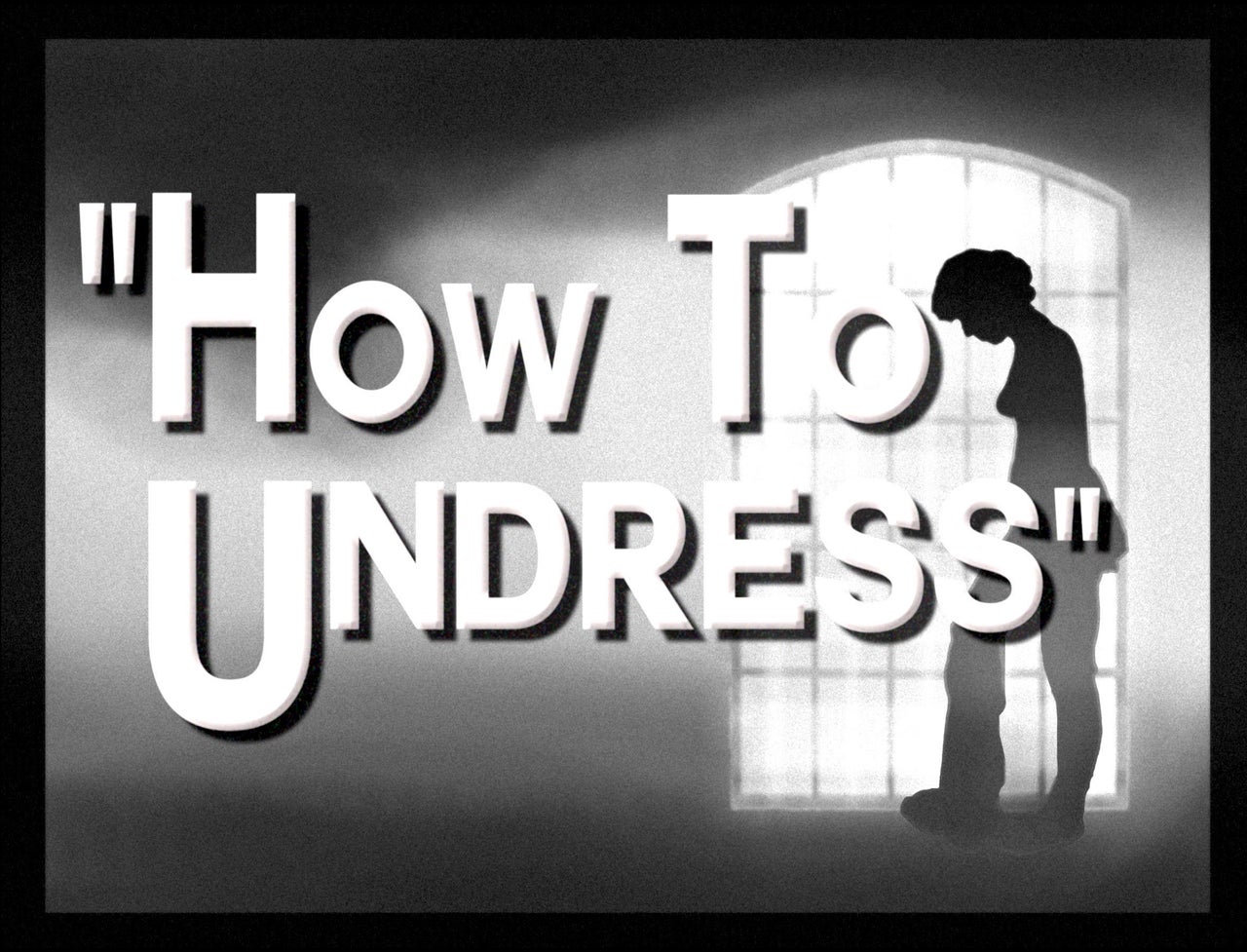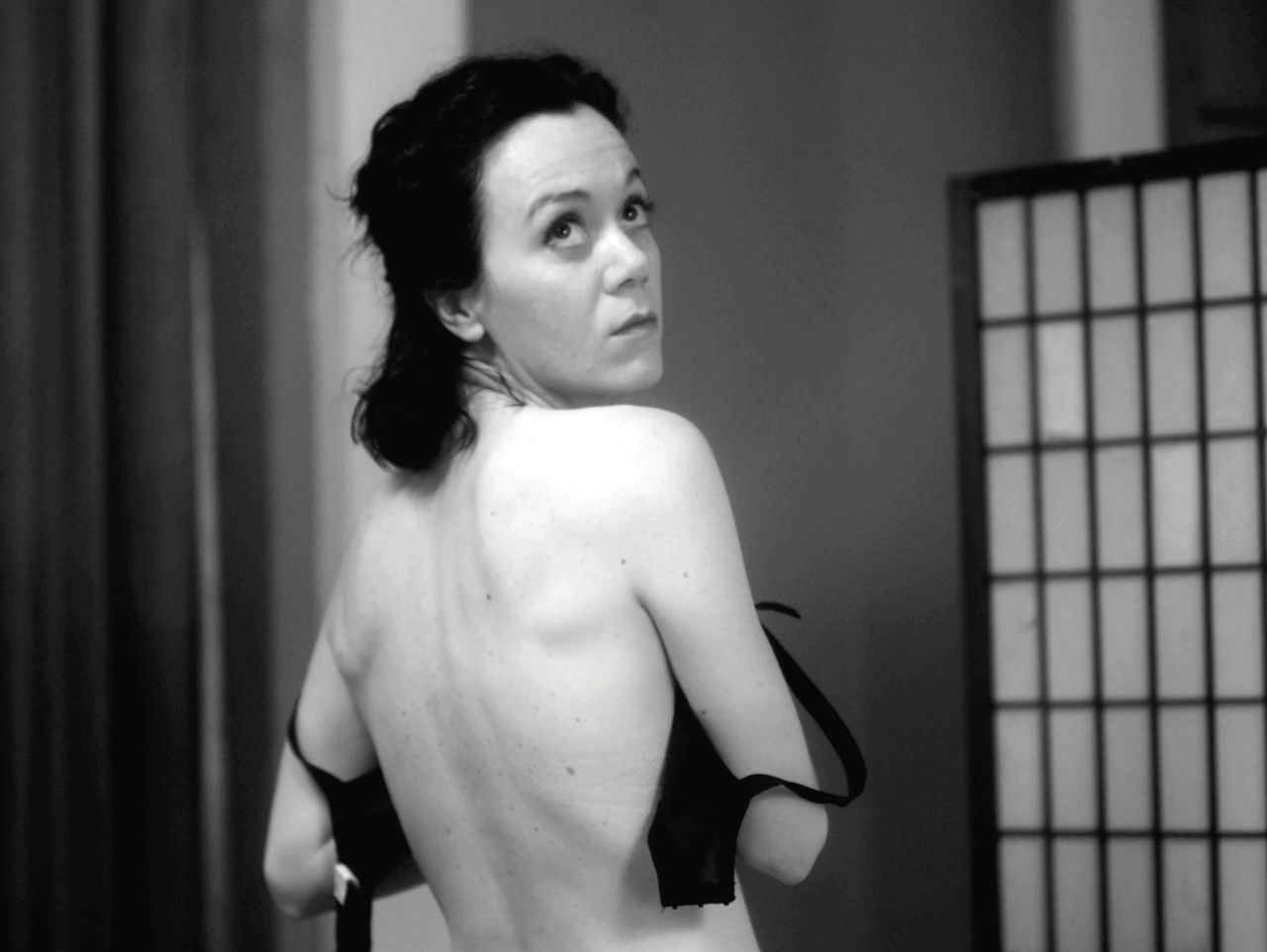German artist Nadja Verena Marcin was rummaging through vintage advertisements, hunting for creative inspiration. Much of the ads she encountered peddled products that promised women they would look younger, lose weight, or please men upon use. In short: they were pieces of misogynist garbage of the all-too-familiar variety.
When Marcin stumbled upon one particular 1960s instructional video, called “How to Undress in Front of Your Husband,” she knew she’d hit the jackpot ― the jackpot of wildly sexist instructional videos, that is.
In the retro short, a man with an old-timey twang gives a prolonged description of the process ― ahem, the art ― of undressing. He luxuriates on the style and tact displayed by a true expert undresser, one who, in his words, “not only knows how to get a husband, but how to keep him.” The video is filled with priceless nuggets of wisdom such as, “It isn’t what you obviously reveal, but what you artfully conceal, that makes disrobing an intriguing art.”
Marcin, whose work most often explores representations of women in the media, was immediately intrigued. “In the video, women’s representation has been infiltrated by this male voice, as well as these male desires and fantasies,” the artist told The Huffington Post. The male narrator quite literally invades women’s most private spaces, molding mundane errands into sexualized performances geared toward male pleasure.
For the artist, however, the film’s implications extended beyond the act of changing clothes. “The video is about the idea of the Peeping Tom,” Marcin said. “In the 1930s, the video camera became a consumer item for the first time. Suddenly, they entered the American household.” Most ads promoting said amateur cameras were geared toward men, and often, they revolved around the prospect of filming women. As Marcin put it: “Men were the creators of the images. Women were the images.”
The first instructional video, according to Marcin’s artist statement, was created in 1937. One might call it the original documentation of mansplaining.
Marcin knew she wanted to, in some way, subvert the film to expose the sexism laced throughout it. The video was so laughably absurd already, however, she didn’t have to change much. “I was thinking: are you going to make it over the top? Absurdist? Gross? I realized my idea was to make the piece as close as possible to the original. And I’m going to play the roles.”

In her cheeky short film, Marcin plays the roles of two women ― Trixie, who disrobes like a stilted slob, and Miss Barry, who has mastered the art of undress.
As Trixie, Marcin dons a platinum blonde wig as she shimmies her way out of dresses with exaggerated awkwardness and punts off her shoes with abandon. The message in her cartoonishly bungled routine: It is really hard to undress badly. Miss Barry, on the other hand, turns de-robing into a striptease, pausing every two seconds to gaze coquettishly into the camera. She practices, as the narrator grossly puts it, “the lovely little tricks that every girl practices on her first sweetheart.”
“Notice the poise of the body, the rhythm of each graceful movement,” the narrator continues, ogling Miss Barry in action. “To the appreciative, there is in a scene like this something truly uplifting. Yes indeed.”
While speaking with HuffPost, Marcin compared the 1960s idea of women as the object of the male-operated camera with a contemporary phenomenon ― that both men and women, thanks to omnipresent smartphones and social media, are being watched and documented all the time. “We are all trained to play these characters in our daily lives,” Marcin said. “Now we do it with much more self-awareness, but it’s still part of our routines.”

Marcin’s film is currently on view at the Whitney Houston Biennial — an alternative to the Whitney Biennial in New York, featuring 125 female-identifying artists. Also featured in the group show is another Marcin piece, this one a photograph titled “Bride.” In it, the artist stands in the world’s largest salt flat, Bolivia’s Salar de Uyuni, a common destination for wedding photos because of its breathtaking beauty. Marcin, standing alone, wears a wedding gown, the bottom of which is stained blood red.
In the visceral image, the bride appears more object than human, part holy relic and part princess doll. From the waist up, she is pristine, commanding and celestial. The jarring intrusion of red, however, evokes associations of brutality and suffering. For Marcin, the piece addressed the rampant domestic violence that women face around the world. The photo communicates that, for many women, getting married is the most dangerous decision they’ll ever make.
Whether she’s symbolizing gender-based violence in a simple and searing image or dragging a retro instructional video using tongue-in-cheek humor, Marcin addresses the manifestations of discrimination women face in daily life.
“Women face so much oppression,” Marcin said. “Whether it’s violence or our representation in the images we consume. It’s all bad and I want to communicate how much we still encounter it every day. I try to have a little bit of a sense of humor around these topics because I feel like a certain amount of humor frees us. As a contemporary voice, this is how I want to invite people to open their hearts and open their eyes and think more. We can’t just deny it. It’s still happening.”

The Whitney Houston Biennial is on view until March 29 at cashama in New York.
